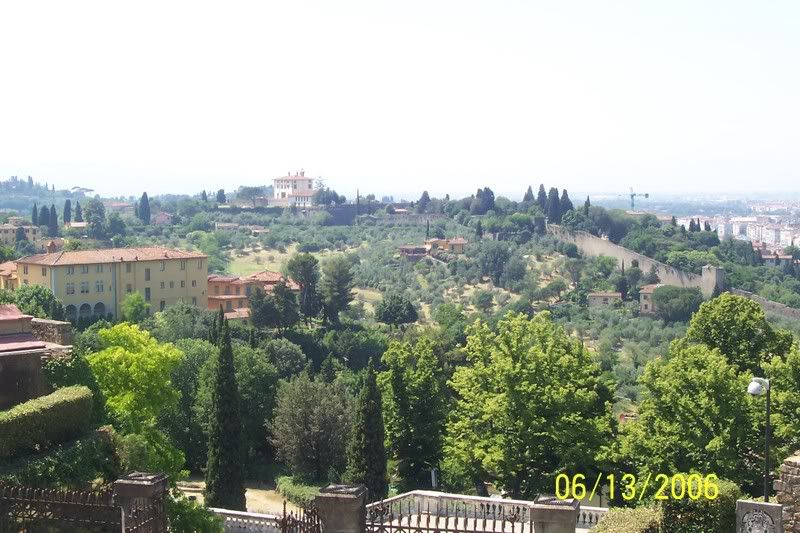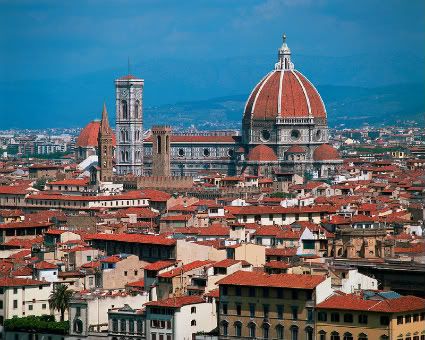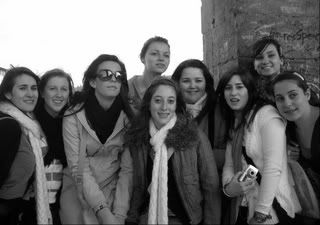 |
| Letizia Pauletto and Enrico Bertoz, Arbe Garbe Wines |
Jon Bonné, Chronicle wine editor - January 15, 2012
In many cases, our Winemakers to Watch for 2012 deserve attention for what they don't do. It comes down to a strong streak of traditionalism, a willingness to innovate by eschewing intrusive winemaking and, instead, working smarter.
That includes the use of old-fashioned wooden fermenters and whole Pinot Noir clusters on the Sonoma coast. It means making Chardonnay by barely touching the barrels, and fermenting with indigenous yeast to highlight Lodi's old-vine Zinfandel. It means minimizing additions in the cellar, and innovating the historical practice of blending white wines.
In doing so, our five choices highlight the best of what California offers.
.
That includes the use of old-fashioned wooden fermenters and whole Pinot Noir clusters on the Sonoma coast. It means making Chardonnay by barely touching the barrels, and fermenting with indigenous yeast to highlight Lodi's old-vine Zinfandel. It means minimizing additions in the cellar, and innovating the historical practice of blending white wines.
In doing so, our five choices highlight the best of what California offers.
.
Winemakers: Enrico Bertoz, Letizia Pauletto
For two people in love with America, Letizia Pauletto and Enrico Bertoz began their wine lives somewhat farther afield: the vineyards of Silvio Jermann, in Italy's northern Friuli region, where they were picking grapes to earn cash while attending the university.
They were already high school sweethearts, living just eight minutes apart in two villages north of Trieste. Bertoz's family had an unusual tie to wine: His father was the local tire dealer, an important man to every vintner with a tractor.
The tedium of harvest was not a kind initiation.
"We swore at the time that we were never going to do that again," Pauletto says.
Bertoz's family also had another tie, to the Nonino family, one of Italy's top grappa makers, who taught him about distillation. And he was familiar with the United States; his aunt lived in Woodhaven, N.Y.
So in 1998, at 24, Bertoz packed his bags for Los Angeles. The Noninos connected him to restaurateur Piero Selvaggio, and Bertoz began working in the wine cellar at Valentino, Selvaggio's restaurant. Pauletto followed a month later, to work as an interpreter and translator.
Valentino's cellar was full of rarities, like an 1892 Brunello from Biondi Santi, but Bertoz was drawn to a flourishy bottle sealed in wax: a 1994 Queen of Spades, the Syrah-based debut from Manfred Krankl's Sine Qua Non. Selvaggio let the young man taste it.
"That's when I think I had an epiphany of American viticulture," Bertoz says. "It was overdone, but I'd never had anything like it before."
Soon he was regularly visiting Sine Qua Non in Ventura, where he worked two harvests and paid close attention to Krankl's unconventional but fastidious winemaking.
The couple got married and in 2005 moved to Napa Valley, where Bertoz worked harvest at Joseph Phelps. Eventually he was hired as assistant winemaker at Girard, and then at Flora Springs.
But their Friulian roots still called. Recalling his work with Krankl, Bertoz found some Viognier in Russian River Valley and hauled it back to Napa in a decrepit 1972 El Camino. Then he discovered grapes familiar from their childhoods, Pinot Bianco and Malvasia, in Sonoma's fastidiously farmed Saralee's Vineyard. In 2007, he called owner Saralee Kunde and secured enough for a first vintage. Arbe Garbe - it means "bad weeds" in Friulian dialect - was born.
In Friuli, white wine is a way of life - as is blending, in part to fend off the challenges of ripeness in a cold climate. "The whole project was to make a wine that reminded us of Friuli," Pauletto says. "It would have been hard with a Napa Chardonnay."
Ultimately Viognier was replaced by Pinot Grigio and the Friulian grape Ribolla Gialla. But Arbe Garbe primarily showcases Bertoz's talents as a white-wine innovator. That includes his use of concrete fermentation vessels to enhance texture; soaking Pinot Grigio on its skins (a frequent technique in Friuli); and partially dehydrating Malvasia in a cold room to concentrate flavor (a trick learned from Krankl).
Now the couple live in a tiny pink farmhouse amid a Rutherford vineyard, where Pauletto runs the business and looks after their 5-year-old son. They have found their perfect hybrid of Friulian tradition and California bounty.
"The beauty of being able to do all of what we do here," Bertoz says, "to bring it all together, is priceless."
Ages: Both are 37
Wines with dinner: 2010 Abbazia di Novacella Alto Adige Kerner
Quotes: "Neutral barrels don't lie, so it was a matter of seeing what the fruit would say." (Bertoz) "They put it next to the Santa Margherita." (Pauletto, on selling a Pinot Grigio-based wine to restaurants)
From the notebook
2010 Arbe Garbe Russian River Valley White ($28, 14.3% alcohol): Mostly from Pinot Grigio and Malvasia, with some Ribolla Gialla. A few more months in the bottle have added apricot-like flesh to match the deep saline and snap-pea freshness. Complex and almost electric in intensity.
Arbe Garbe Wines website
For two people in love with America, Letizia Pauletto and Enrico Bertoz began their wine lives somewhat farther afield: the vineyards of Silvio Jermann, in Italy's northern Friuli region, where they were picking grapes to earn cash while attending the university.
They were already high school sweethearts, living just eight minutes apart in two villages north of Trieste. Bertoz's family had an unusual tie to wine: His father was the local tire dealer, an important man to every vintner with a tractor.
The tedium of harvest was not a kind initiation.
"We swore at the time that we were never going to do that again," Pauletto says.
Bertoz's family also had another tie, to the Nonino family, one of Italy's top grappa makers, who taught him about distillation. And he was familiar with the United States; his aunt lived in Woodhaven, N.Y.
So in 1998, at 24, Bertoz packed his bags for Los Angeles. The Noninos connected him to restaurateur Piero Selvaggio, and Bertoz began working in the wine cellar at Valentino, Selvaggio's restaurant. Pauletto followed a month later, to work as an interpreter and translator.
Valentino's cellar was full of rarities, like an 1892 Brunello from Biondi Santi, but Bertoz was drawn to a flourishy bottle sealed in wax: a 1994 Queen of Spades, the Syrah-based debut from Manfred Krankl's Sine Qua Non. Selvaggio let the young man taste it.
"That's when I think I had an epiphany of American viticulture," Bertoz says. "It was overdone, but I'd never had anything like it before."
Soon he was regularly visiting Sine Qua Non in Ventura, where he worked two harvests and paid close attention to Krankl's unconventional but fastidious winemaking.
 |
| Enrico and Letizia are natives of the Friuli region (Friùl) |
But their Friulian roots still called. Recalling his work with Krankl, Bertoz found some Viognier in Russian River Valley and hauled it back to Napa in a decrepit 1972 El Camino. Then he discovered grapes familiar from their childhoods, Pinot Bianco and Malvasia, in Sonoma's fastidiously farmed Saralee's Vineyard. In 2007, he called owner Saralee Kunde and secured enough for a first vintage. Arbe Garbe - it means "bad weeds" in Friulian dialect - was born.
In Friuli, white wine is a way of life - as is blending, in part to fend off the challenges of ripeness in a cold climate. "The whole project was to make a wine that reminded us of Friuli," Pauletto says. "It would have been hard with a Napa Chardonnay."
Ultimately Viognier was replaced by Pinot Grigio and the Friulian grape Ribolla Gialla. But Arbe Garbe primarily showcases Bertoz's talents as a white-wine innovator. That includes his use of concrete fermentation vessels to enhance texture; soaking Pinot Grigio on its skins (a frequent technique in Friuli); and partially dehydrating Malvasia in a cold room to concentrate flavor (a trick learned from Krankl).
Now the couple live in a tiny pink farmhouse amid a Rutherford vineyard, where Pauletto runs the business and looks after their 5-year-old son. They have found their perfect hybrid of Friulian tradition and California bounty.
"The beauty of being able to do all of what we do here," Bertoz says, "to bring it all together, is priceless."
Ages: Both are 37
Wines with dinner: 2010 Abbazia di Novacella Alto Adige Kerner
Quotes: "Neutral barrels don't lie, so it was a matter of seeing what the fruit would say." (Bertoz) "They put it next to the Santa Margherita." (Pauletto, on selling a Pinot Grigio-based wine to restaurants)
From the notebook
2010 Arbe Garbe Russian River Valley White ($28, 14.3% alcohol): Mostly from Pinot Grigio and Malvasia, with some Ribolla Gialla. A few more months in the bottle have added apricot-like flesh to match the deep saline and snap-pea freshness. Complex and almost electric in intensity.
Arbe Garbe Wines website





